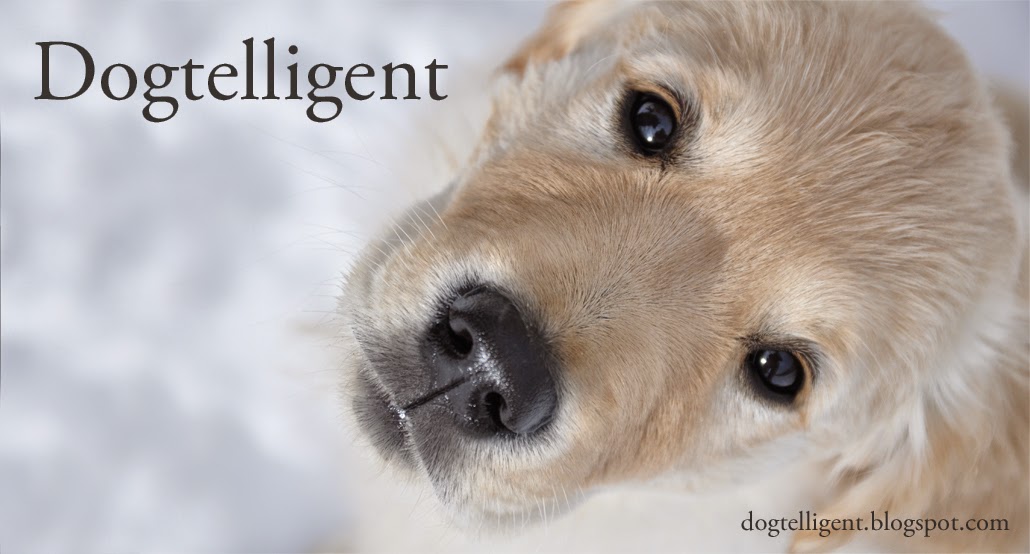Teaching your dog to go to a specific place and stay there is a trick that will come in handy in many situations. If you for example bring your dog with you to a friend, and one of the other guests turns out to be allergic or scared of dogs, it is very helpful for that person if your dog can stay out of the way. This is also useful if your dog has the habit of begging for food at the table, you can simply tell it to go and lie down on its mat, and it will. Other situations where it is useful is if you have a problem with your dog rushing to the door when visitors arrive or if you have a dog that has a hard time settling down in new environments. I myself think that this little trick will be very useful when the spring comes and the clean, dry snow will turn into slush and mud. A place where the dog will stay until it is dry after walks will definitely come in handy. The applications are endless..
There are many ways of teaching your dog to go to and stay on a mat, below comes some tips on how to do it.
Step 1
So where do you start? Well, first your dog has to learn to lie down on cue. This can be done in a number of ways, but I would recommend either luring the dog into lying down or free shaping it. Luring means that you use a treat to lure the dog into a "down" by lowering the treat to the floor. When the dog lies down, it gets the treat. When you free shape a "down", you wait until the dog voluntarily lies down, mark the wanted behavior (that means click with the clicker or say "good") the second the dog does the behavior you were looking for (i.e. lying down), and immediately give it a treat. In both cases, introduce the cue "down", when the dog starts to offer a down many times in a row, on it's own. Keep doing this until the dog will lie down when you say "down".
 |
| Link lying down in the snow. Here he is 3,5 months old. |
Step 2
Introducing the mat. When you come to this stage, the method will again vary a little depending on if you have trained your dog by luring or by free shaping/clicker training. If you have been using luring as the main method in training, use a treat to get the dog to go to the mat and lie down. You can either choose to just reward the dog for walking to the mat or immediately put it in a "down" on the mat, and then reward it. Do a couple of repetitions close to the mat, with lure, then reduce the lure more and more, and introduce a cue like "go lie down" or "go to the mat". When the dog starts to perform on cue, start increasing the distance to the mat. If your dog fails, decrease the distance again until you get a more reliable behavior, then increase it again.
If you've been clicker training your dog, your dog has learned that offering behavior involving new objects is rewarding. To a good clicker trained dog, you will only have to wait for the dog to voluntarily offer a "down" on the mat, and immediately click and reward. After only a couple of repetitions the dog will get the idea. Start introducing the cue, and when the dog does the behavior reliably on cue, increase the distance.
Step 3
Now that the dog knows what to do on cue, the dog has to be taught that it will only get the treat when it stays on the mat. Start increasing the time it has to wait for the treat, and start moving away from the dog. If it gets up, just tell it to get back to the mat. Make sure that each training session isn't too long. The dog is supposed to find it fun and easy, since when it does, it will perform better and learn faster. Staying on the mat is also great training for dogs that doesn't find it rewarding to be calm, since only staying still will be rewarded. Start increasing the time the dog has to stay on the mat before it gets its treat.
So all in all, the "go to the mat and stay there" is three separated parts: 1. Go to the mat. 2. Lie down on the mat. 3. Stay until I tell you otherwise. All of these three parts can be trained separately. Remember to always train your dog with positive reinforcement.
There you have it! At this stage the behavior just has to be reinforced by keeping repeating it, vary the difficulty, and make sure to stop before the dog gets tired of it. It won't take long until you have a reliable "go to the mat". Good luck!
 |
| My dog Link resting on his mat. He has a microfiber mat that is made to absorb dirt and water, so it is perfect to have him lie down on it after walks. He is so comfortable on his mat that he will go lie down on it without me telling him to. That is definitely one of the positive sides of training your dog with R+ (positive reinforcement) methods. It is not a punishment for him to be told to go to the mat, but rather a place where he feels safe and knows that good things happen. |












